When outsiders are asked what they know about Doncaster, a few things may come to mind: Shoppingtown, good Chinese food, no train line, a 24-hour Pancake Parlour.
Those whose memories go back further may remember unmade roads and endless paddocks of fruit orchards.
But there is one thing that local councillor and journalist Stephen Mayne thinks of when trying to explain some of the defining characteristics of these eastern suburbs.
“There’s no other place in the world with the same concentration of tennis courts as what we have here,” says Mayne.
Ian and Lisa Waters at their communal tennis court in Doncaster East. Credit: Joe Armao
There are 1542 properties with tennis courts in Manningham Council, as well as 7644 registered swimming pools. You’ll find them in backyards across Doncaster and its neighbouring suburbs, Doncaster East and Templestowe.
“My junior tennis coach was on an orchard,” says Mayne. “You were always playing on private tennis courts, all your friends had them.”
The prevalence of tennis courts signifies a few things, according to Mayne.
For a start, it shows that there was some wealth here when the houses were built in the post-war residential building boom.
It also points to how big the blocks were when they were first developed. There are still restrictions on how some of those properties can be subdivided or the number of dwellings that can be built on them today.
“What else do you put on an acre block?” he says. “You might as well build a tennis court or a pool.”
From bucolic beginnings as Melbourne’s food bowl, Doncaster and Doncaster East have since transformed into some of the busiest parts of Melbourne.
They span 20 square kilometres and were home to more than 55,000 people at the 2021 census. That population is estimated to exceed 60,000 today.
The influx of all those people has led to an area that can be very different.
From the high-rise apartment towers of Doncaster Hill at one end of the spectrum, to the large family homes – and yes, tennis courts – of Doncaster East at the other.
But growth has led to challenges, from worries about crime to getting around with poor public transport.
Doncaster’s changing face
Cindy Wu is sitting at one of the tables of Star Turn cafe on Doncaster Road. The eatery’s fusion menu showcases the suburb’s melting pot of cultures, including katsu burgers, kimchi fried rice and shakshuka eggs.
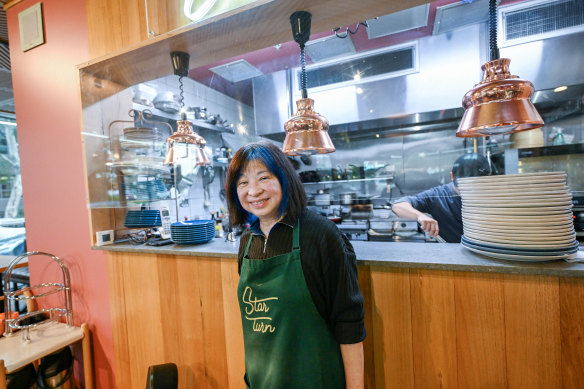
Cindy Wu moved to Doncaster from Hong Kong 30 years ago.Credit: Joe Armao
Wu has lived in Doncaster for 30 years after moving to Australia from Hong Kong with her mother.
She splits her time between nursing at Box Hill Hospital and working front-of-house at the cafe, while her husband, Joseph, cooks in the kitchen. Her son also helps out.
The area has transformed since she has lived here. Star Turn sits on the ground floor of the 249-apartment complex, Nest At The Hill, which was completed five years ago.
Several other towers are popping up around it, as part of a strategy to densify this part of Doncaster.
“This is more Hong Kong-style now,” she says. “It’s one step to the bus stop, one step to the shopping centre.”
Directly opposite the apartment building is perhaps the area’s most recognisable landmark, the Westfield Doncaster shopping centre.
Known to locals by its former name, Shoppingtown, the cavernous mall has undergone several rebuilds since it was first constructed in 1969.
It was Westfield’s first entry into Victoria and pretty much an immediate success, standing as a beacon of progress on the hill for the rest of the eastern suburbs.
More than 50 years later, the surrounding area is now catching up with that first taste of urbanisation.
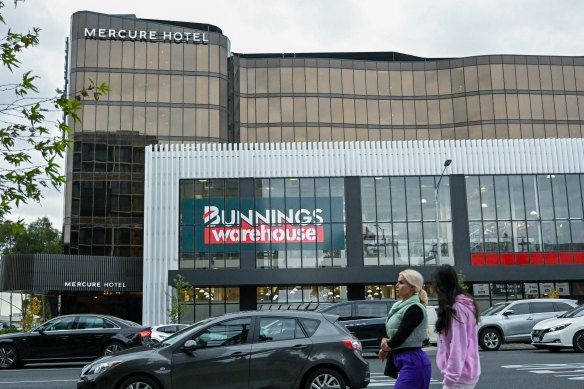
The ‘Bunnings hotel’ opposite Westfield Doncaster shopping centre.Credit: Joe Armao
Some quirks have emerged as buildings go up cheek by jowl, the best example being a Mercure Hotel that sits directly above a Bunnings Warehouse.
For those who want to sleep two minutes from a sausage in bread and some power tools, it’s perfect.
Former opposition leader Matthew Guy recalls working at the Myer menswear department at Westfield in his younger years.
“I’m colour-blind, and I sold men’s suits and ties,” he says.
“It was a bit concerning, there must have been a lot of men walking around in the late 1990s with a very bad tie/shirt combination”.
Guy grew up in nearby Montmorency but knows Doncaster well as the local MP for Bulleen.
“In the past, people thought Doncaster, they just thought Shoppingtown, but it’s more than ‘Shoppo’ nowadays. It’s a big regional hub,” he says.
“It has changed dramatically in the last 20 years.”
Bearing fruit
Before settlers cleared the land around Doncaster for agriculture, the Woi-wurrung-speaking Wurundjeri tribe of the East Kulin Nation lived here for thousands of years off the rich bounties provided by the Yarra River.
One of the area’s sites of Indigenous significance is a centuries-old canoe scar-tree at the Heide Museum of Modern Art in Bulleen, which has the name Yingabea (yinga meaning sing and beal meaning redgum).
Among the early pioneers were German Lutherans, who named their small village Waldau.
The suburb got its eventual name from John Robert Wilson, a hotelier from Doncaster in Yorkshire who opened the Doncaster Arms Hotel on an unnamed track to the Warrandyte goldfields in 1854.
That dirt trail would eventually become known as Doncaster Road, now a major arterial that sweeps from Kew in the city’s inner east out to the tall pine trees of Donvale on Melbourne’s outskirts.
Not long after white settlement, the fertile soils were cultivated into a major fruit-producing region, growing apples, pears, peaches and other crops.
That attracted tourists, who came out from Melbourne to pick fruit and take in the fresh air.
“It was a place for a Sunday outing,” says Geoff Broome, president of the Doncaster Templestowe Historical Society.
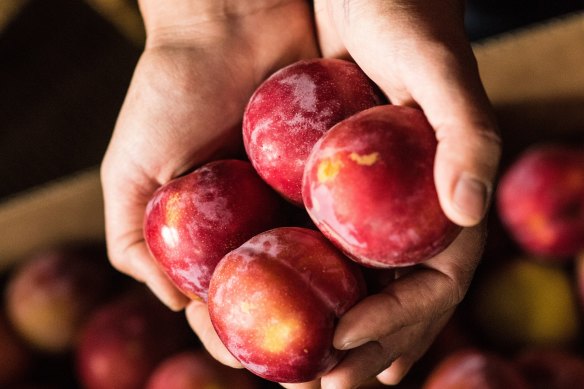
Organic fruit at Petty’s Orchard in Templestowe.Credit: Richard Cornish
For 100 years, food was the main source of employment. That started to change when the city needed space to grow after World War II.
Those big paddocks lined with fruit trees were seen as being ripe for subdivision in the 1950s and 1960s.
Lyn Petty’s family goes back six generations in Doncaster and were among the big fruit growers – the name Petty is on the area’s only remaining orchard.
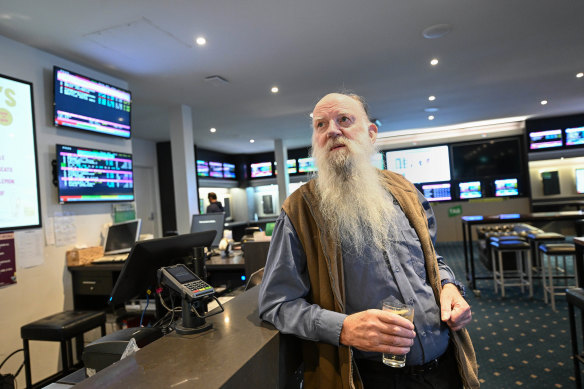
Doncaster local Dave Thomas at Hotel Shoppingtown.Credit: Joe Armao
“I’ve got some postcards that were sent to my grandmother and her address was just ‘Main Road, Doncaster’. No house number, nothing,” she says.
Dave Thomas, 74, remembers it being like a country town. He laughs about driving his dad’s car around as a kid and never getting booked, even though the police knew what he was up to.
“You couldn’t do it today,” he says.
‘Head of the dragon’
Doncaster’s reincarnations have mirrored the waves of migration that have swept through Melbourne from the middle of the 20th century.
When the suburb was first being developed for housing, many buyers were Greek or Italian immigrants attracted to the room offered by the newly built suburbs.
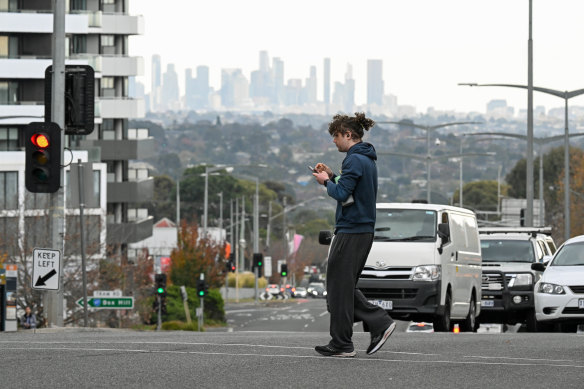
Doncaster’s elevation has made it the ‘head of the dragon’ for those who follow feng shui.Credit: Joe Armao
Now, almost a third of the population speaks either Cantonese or Mandarin at home, according to the Australian Bureau of Statistics. That number has doubled since 2001.
There are several reasons for the shift. One is feng shui, the ancient Chinese practice which orients the environment to best harmonise energy forces.
With this in mind, real estate agents have identified Doncaster as the “head of the dragon” due to its elevation. Other strong Chinese communities are situated around the dragon’s belly (Box Hill) and tail (Glen Waverley).
“When people are moving here from China, they ask me to recommend a suburb,” says immigration agent Jean Fan, who was born in Nanjing and moved to the area with her parents in the mid-1990s.
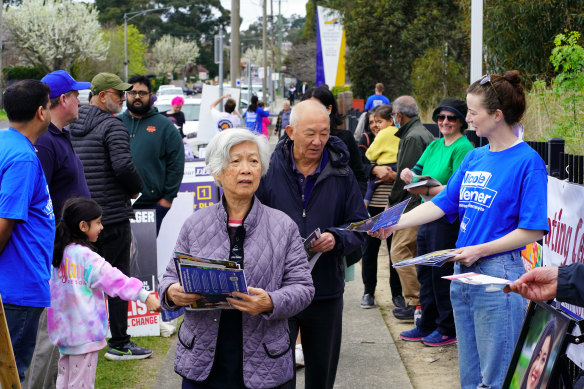
Voters at East Doncaster Secondary College at the Warrandyte state byelection in 2023.Credit: Luis Enrique Ascui
“I tell them Doncaster or Box Hill. Their English may not be very good, so they feel they can live comfortably there.”
Another factor for people choosing where to live is education, says Fan.
East Doncaster Secondary College is now one of the best government high schools in the state – 30 per cent of students had an ATAR above 90 last year.
Serpell (Templestowe) and Beverley Hills (Doncaster East) are also among the highest achieving primary schools.
That reputation is creating its own “Balwyn High effect”, where people pay over the odds for property to move into the catchment zone.
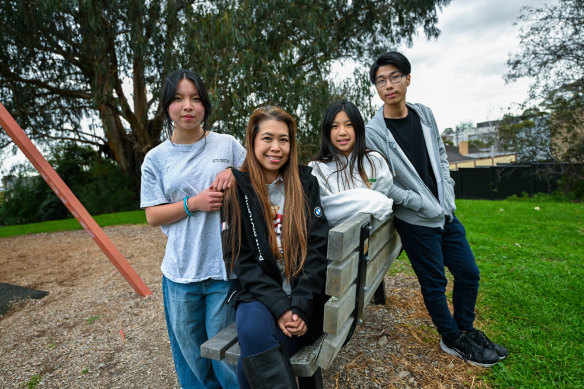
Lillian Lee with her children Denver, 16, Isabella, 15 and Ava, 11. Credit: Joe Armao
Lillian Lee, 46, has lived in Doncaster East her whole life and now owns banh mi shop Bamby’s at the Jackson Court Shopping Centre.
She’s one of more than 70 per cent of people in the area with two parents born overseas (her heritage is Singaporean and Malaysian).
She went to school here and now her children do, too. She’s noticed how the intense focus on education has changed.
“I do find that they really push the kids here, everyone has tutoring. Once or twice a week, every subject,” Lee says.
“You feel like you’ve got to get on the bandwagon, otherwise your kids are falling behind.”
Lee says the demographics of the area have shifted significantly. As a teenager, there were two sides to every fight: one for those whose parents were Asian, another for the Greeks and Italians.
Now, she says, a new situation has emerged, as parents speaking different languages converge at the school gates.
“It can be hard to feel included,” she says.
Rising worries about crime
Like many parts of Melbourne, there is a concern about crime in Doncaster, particularly car thefts and burglaries.
Criminal incidents have increased in the past year from 1604 to 2092, according to the Crime Statistics Agency.

Dr Ashley Gordon was killed in Doncaster after a confrontation following an aggravated burglary. Credit: Nine News
The two most common offences were stealing from a motor vehicle and non-aggravated burglaries.
The crime that shocked the eastern suburbs was the killing of 33-year-old doctor Ashley Gordon, who was stabbed to death on Eildon Street in Doncaster in January after a confrontation following a home invasion.
Sister Natalie says Gordon had lived in Doncaster for five years and was preparing to move as it was becoming less safe.
“He had been actively looking for a new apartment because of the crime rate,” she says.
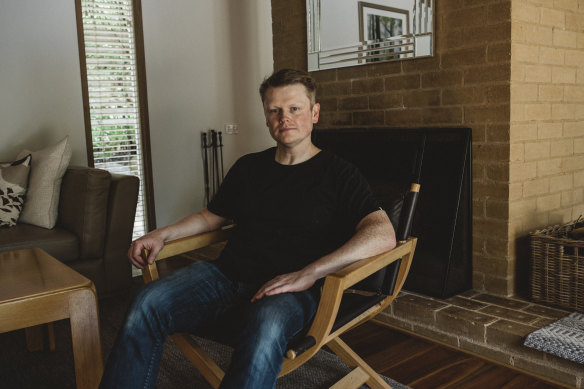
Menzies MP Keith Wolahan.Credit: Tash Sorensen
The terrifying randomness of his death has now changed her perception of the suburb forever, she says. Previously, Doncaster had been a pleasant place where she once enjoyed a fun night out.
“Our family is from Gippsland. I prefer the country over the city, but I hope to never drive through Doncaster again,” she says. “Even seeing the name on signs brings it all back.”
Keith Wolahan, federal MP for Menzies, says that organised crime gangs see Doncaster as a cash-rich area with big houses and nice cars in the driveway.
“It is something that people are talking about more than they did before,” he says.
Despite rising concerns, Victoria Police points to data showing Manningham is the second safest of all 31 metropolitan council areas.
“We want to reassure the community that police are on patrol every day and night,” says local area commander Acting Inspector Malcolm Darke.
Still no train line
The lack of a train line to Doncaster has been a huge issue for how the suburb has developed.
Many governments have promised to build it, but the project has slowly gathered dust as others were chosen first. The latest is the $26 billion North-East Link connecting the Eastern Freeway to the Ring Road.
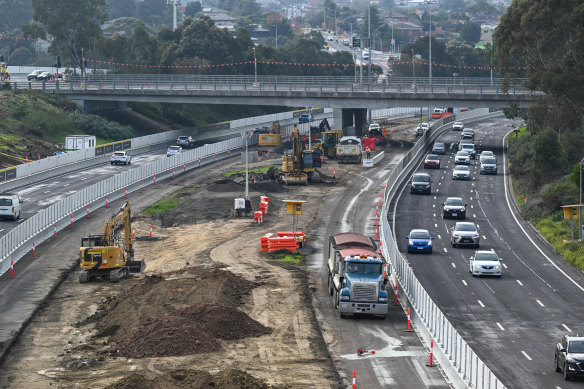
The middle of the Eastern Freeway, once reserved for Doncaster rail, is now making way for the North-East Link.Credit: Joe Armao
There is still evidence of what might have been. The Eastern Freeway had room left in the middle reserved for a rail line, while the bridges were built tall enough to accommodate the trains.
And while Doncaster once boasted the first ever electric tram in the 1890s, it doesn’t have one today.
Instead, Doncaster has been left to rely on buses as its sole method of public transport.
At the Doncaster Park and Ride, David Robertson says the bus system is decent for going into the city, as it is still heavily focused around the peak-hour commuter.
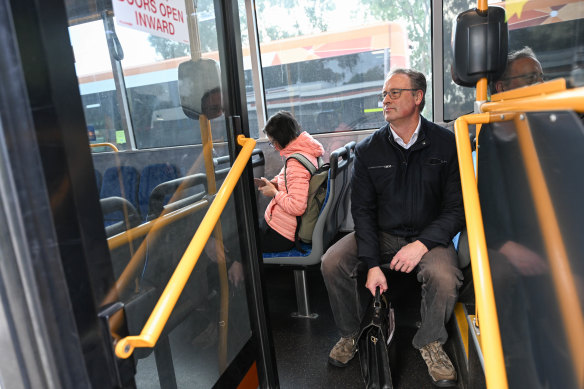
Bus commuter David Robertson at Doncaster Park and Ride.Credit: Joe Armao
Connectivity with the rest of the network is still lacking, he says. He also thinks buses themselves are not as attractive as other forms of public transport.
“I call it bus gymnastics,” he says.
“You get on, you’re trying to get a seat and find your myki, and the bus driver is already driving off. Older passengers find that tough to deal with.“
The result of this is that cars are still the dominant form of transport in Manningham. Households own two cars on average, putting them at the same level as outer council areas like Hume, Knox and Mornington Peninsula.
Robertson, secretary of the Public Transport Users Association, is still hopeful that Doncaster rail will happen one day.
“Menzies is marginal now,” he says. “It’s probably more likely now than it was 10-15 years ago.”
There is another small glimmer of hope offered by the Suburban Rail Loop, the gargantuan $125 billion project linking Melbourne’s outer and middle suburbs.
Currently, Doncaster is only a dot on a map as the government progresses with the $34.5 billion first stage from Cheltenham to Box Hill.
And even if SRL does get delivered as proposed – and there are plenty of sceptics – Doncaster commuters will still have to change stations to get into the city.
Managing growth
The next stage in Doncaster’s evolution will hinge on how it manages population growth.
That includes taking on its share of the state government’s plan to build 800,000 homes over the next decade.
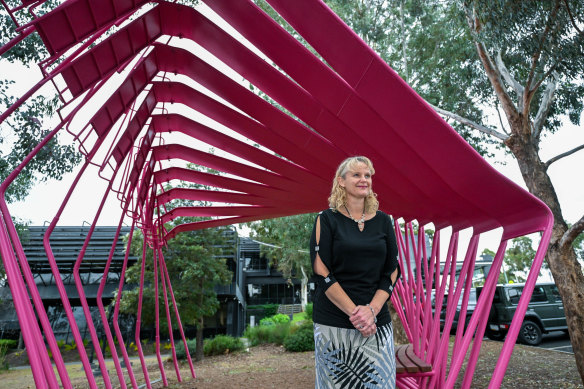
Carli Lange, the mayor of Manningham.Credit: Joe Armao
Manningham mayor Carli Lange says council is putting together its residential strategy, which will involve more than 8000 new dwellings.
A key focus is maintaining the character of the various neighbourhoods, while also helping to alleviate housing shortages and providing places for younger people to move into.
“Doncaster and Doncaster East are the heart of Manningham,” she says.
Another important detail will be finding a solution for older residents looking to downsize.
“We are one of the oldest municipalities, on average,” Lange says.
Ian Waters is grappling with that very problem.
Loading
He and his wife, Lisa, are empty nesters with two adult children. Their house is becoming too big for their current lifestyle.
“We’ve got four bedrooms, two studies, three-car garage, rumpus room,” he says.
“There’s a lounge room I haven’t sat in 20 years and a dining room I haven’t been in for 25 years.”
He would love to stay in a place he remembers as being “like Mars” when he first moved from Footscray in 1972.
But finding something suitable for a decent price has proved difficult.
“They reckon the school zone adds $150,000 to the property,” he says.
“I’m not sure, I’m thinking about going back to the western suburbs, maybe Williamstown. You can get more for less money.”
Start the day with a summary of the day’s most important and interesting stories, analysis and insights. Sign up for our Morning Edition newsletter.

